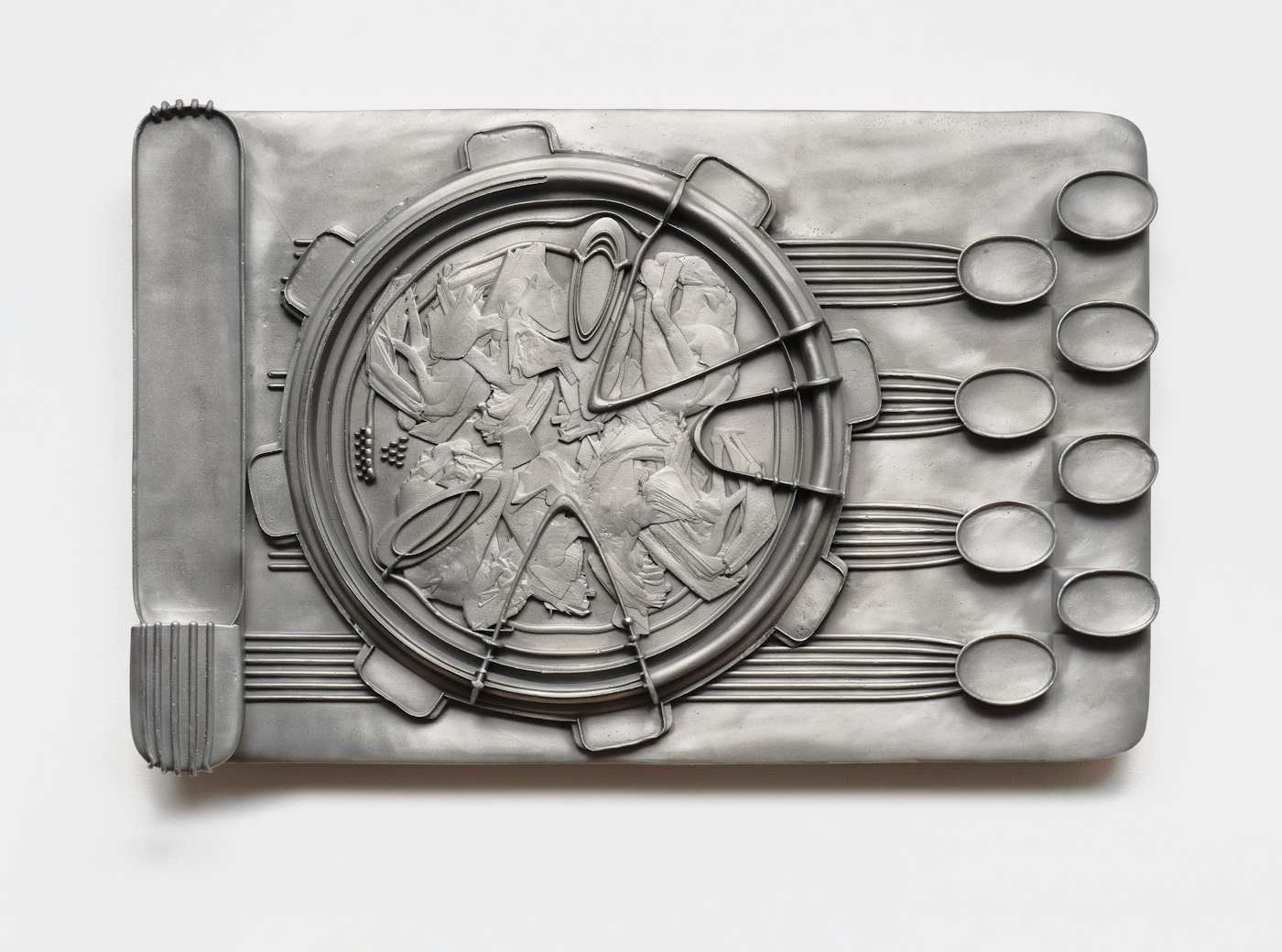The Hanging Gardens of Perpetual Motion
The Hanging Gardens of Perpetual Motion encourages the viewer to engage is an almost self-reflective dance between what is obvious to the naked eye and what is intended to be visually just out of frame within the scope of each sculpture or painting, creating a suggestive almost flirtatious sequence for the viewer when encountering Swinburne’s work. What at first glance can easily be mistaken for sheer futuristic form; swathes of color and juice, feasts for the eyes; layers upon layers of data and story imprinted in segments of color, each delicate movement of 3D printed resin, aluminum, bronze, or pigment. The artist's approach to art making is a summary of its parts; the practice of creating imagery via data, with clear philosophical intent creates a fascinating and impactful space for discovery. The artist uses the idea and image of the human body foremost as a template of what can be deemed organic and then inorganic. From these ideas Justin creates a juxtaposition to this organic metaphysical matter by infusing his technologically advanced work with an ‘organic conscience’.
‘I think my work is fundamentally about the body, as it is the vehicle with which I navigate reality. The forms and images I work with and ultimately present always feature a reconciling of physical bodies and their digitized counterparts. The slippage between the two, the conflation, but ultimately a removal of their perceived binary and the resulting non-dualism, or one-ness of the physical and the digital, or the body and mind, or the material and the spiritual.’
Justin Swinburne
In the works included in the exhibition, the body is in a constant flux of extension and amputation, which are recurrent throughout the exhibition, creating an extended visual organic orbit for the viewer to participate with. The work throughout the exhibition encompasses a range of visual epitaphs, reminiscent of non-verbal poetry, musings via synergies of aesthetic syntax. There are scenes of joy, mourning, love, transcendence… at times the scene disappears entirely, and the picture plane seems to have abandoned human stories for the stories of humanity's artificial progeny.
Traditional forms such as low relief and abstract painting are rendered with the contemporary tools of CGI and 3D printing. Some presented as glossy space age surfaces, some as oxidized outdoor monuments, raw aluminum, and bronze. All of which represent themselves as new expressions, while simultaneously with the ambition to remind the viewer of their past life; or create associations with utopian visions from the past.
Structurally the new suite of work is the result of the merging organic and synthetic systems of object and image making. Initially, the reliefs start as photorealistic 3D scans of people and objects, the paintings start as fluids on flatbed scanners. These starting points are in turn used as raw material and processed through intuitive and algorithmic systems to arrive at the forms present in the exhibition. Geometry meshes are degraded, deformed, sculpted, and polished into their new forms. Scanned liquids are used as textures on 3D objects which are then used to create 3D compositions and photographed with 360-degree cameras.
The works on di-bond originate as 3D spaces in a digital workspace. In these paintings the artist brings in textures and objects, often by flatbed/3D scanning respectively and sometimes made from scratch. Swinburne then sets the virtual camera to 360 views, in doing so the picture plane is expanded beyond its traditional pictorial structure and the expansive view is forced into a flat rectangle resulting in mostly abstract imagery. This flattening and reduction of data to fit the format of a rectangle reminds the artist of Plato’s allegory of the Cave; ‘allowing for the surface of the di-bond to become a 2D shadow of a larger world that created it.’ Justin explains further, ‘This is a process that speaks directly to the history and conventions of painting/image making. From the Renaissance advent of linear/two-point perspective to the flatness of Greenberg/modernist painting.’ To emphasize this relationship the image is then printed in UV ink and finished with layers of resin, applied with a painterly attention to surface.
Swinburne is invested in a dichotomy of practice; there is a constant dialogue between altruistic input and output, marrying ideas with technology and finding methods to express this marriage. While engaging with these technologies, equal priority is given to the unintended but characteristic errors built in and the representations they serve, something that is evident when viewing his work. These artifacts, or glitches inform the work as a document or artifact, the result allows for the artist to present ambiguous allegories with a contemporary visual language of his work.
